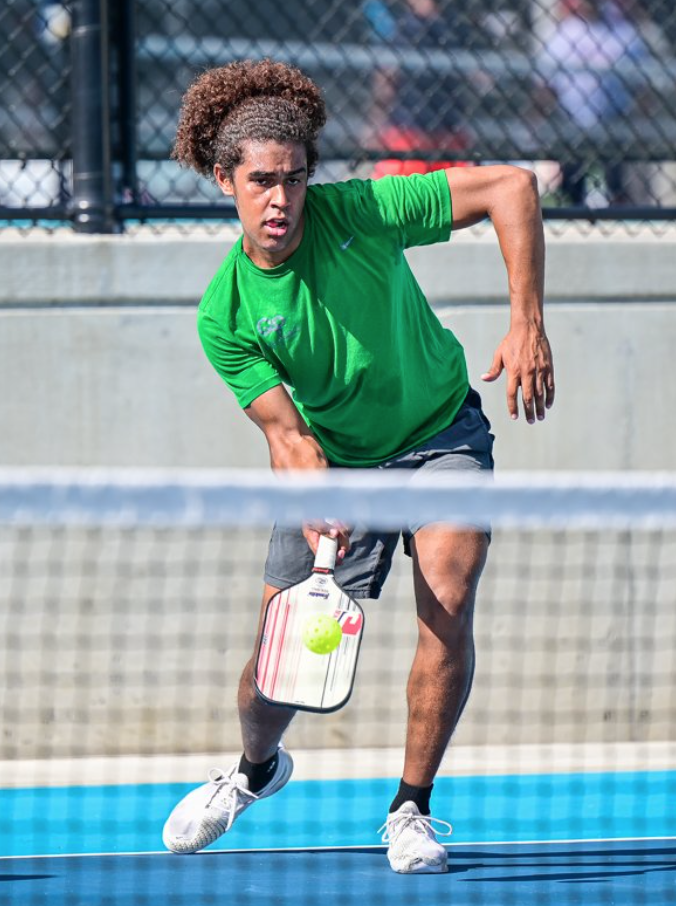Dink or Attack? How To Improve your Pickleball Attack Game
Playing pickleball is simple. The rules aren’t too difficult to understand, and just about anyone can hop onto a court and start slapping around the balls. But, after you start playing more and go against more competitive players, you quickly learn that maybe the game isn’t so simple after all.
There is nuance and strategy and a flow to pickleball matches.
One of those nuances is when to play defense and when to attack. Today’s article is based on this video from John Cincola Pickleball which goes over dinking vs. attacking while providing ways to improve your pickleball attack game.
Let’s get started.
"To Dink or Not To Dink?" That is the Question
It’s not quite the same question the great bard posed over 420 years ago, but for picklers, it’s one of the most important questions you’ll need to answer; “When should I speed up my shot and when should I dink the ball?” Well, the answer isn’t so simple. Because, like everything else pertaining to optimal strategy, the answer is “it depends.”
However, what we do know for sure when deciding between a dink or speed-up shot (attack shot) is that we want each to look precisely the same to our opponents. This means we must disguise our intentions so that they are ill-prepared to handle whatever comes their way. To practice this, we have a drill for you to try.
2 slow. 1 fast.
Find a wall to practice on and stand about seven feet away from it. Softly hit (dink) a ball into the wall, allowing it to bounce back to you. Dink it again. Then speed up your shot on the third strike (catch the ball as it comes back to you to avoid having to chase after it). The goal here is to do this series of shots over and over again. Two slow shots followed by one fast shot.
As you practice, really focus on keeping your paddle in a ready position and not giving away the intent of your next shot. Your arm and shoulder should be relaxed, and as you lift your paddle toward the ball, it shouldn’t be clear what type of speed you’re putting on the ball.
Repeatedly doing this will help you develop a feel for the soft shots and help you learn how to disguise the sped-up ones.
Practice with your forehand and backhand.
To step your practice up a notch, instead of catching the ball and resetting the progression, let the ball hit your paddle after the sped-up shot to reset the progression more naturally and keep the practice going.
Pull Out the Practice Machine
After you feel good about practicing against the wall, get the ball machine out (consider getting your own machine or simply use one provided by a pickleball club) and have it spit balls at you while you stand at the NVZ line. Practice the same progression. Two dinks and one speed-up shot. Forehands and backhands. Focusing on keeping your backswing short and making each shot look exactly the same.
Take It Out of the Air
A great time to attack is when the ball is still in the air. It can catch your opponent off-guard, giving them less time to react than if you let the ball bounce in the kitchen first. But, just because you hit the ball out of the air doesn’t mean you can’t still dink it. Using the wall or the ball machine, focus on hitting the ball before it bounces.
Instead of going two dinks and one speed up, just let the ball itself decide for you. If it’s a ball you feel comfortable speeding up your shot for, go for it. If it’s closer to your feet or you don’t think you’d be able to accurately hit it harder, go ahead and dink it.
Also, remember to switch between backhand and forehand to work both sides evenly.
Take it to a Match
We practice so that we can play better in actual matches. Now that you’ve spent some time getting more comfortable attacking and dinking, you want to implement it into your game. If you’re a more passive player, meaning you let the game come to you instead of forcing things, then this may feel awkward and make you uncomfortable.
However, trying these new skills out in real action is essential.
Decide at several parts of your match to be either passive or attack more aggressively. This doesn’t mean you need to play recklessly. Instead, just alter your mindset depending on the situation you’re in. If you mess up, that’s okay. That’s how we learn and get better. Try to get into the flow of the match and force a few attack shots in there instead of waiting for a shot to reveal itself. Similarly, you can dink more than you normally do instead of forcing shots.
Ideally, switching up what you normally do will show you what you’re actually capable of doing and help you develop a better understanding of when and how to use each of these shots.
Conclusion
Keep practicing, and soon your pickleball game will become better than ever. To use another fake quote by William Shakespeare, “Be not afraid of greatness. Some are born great, and others have to spend hours of practice against a wall to learn when to dink or not to dink.”
Good luck out there!
This video is part of a series of videos from John Cincola Pickleball. Check out his YouTube Channel to see the other parts for more great tips.
And keep checking Pickleball University for the latest information and news about pickleball.





